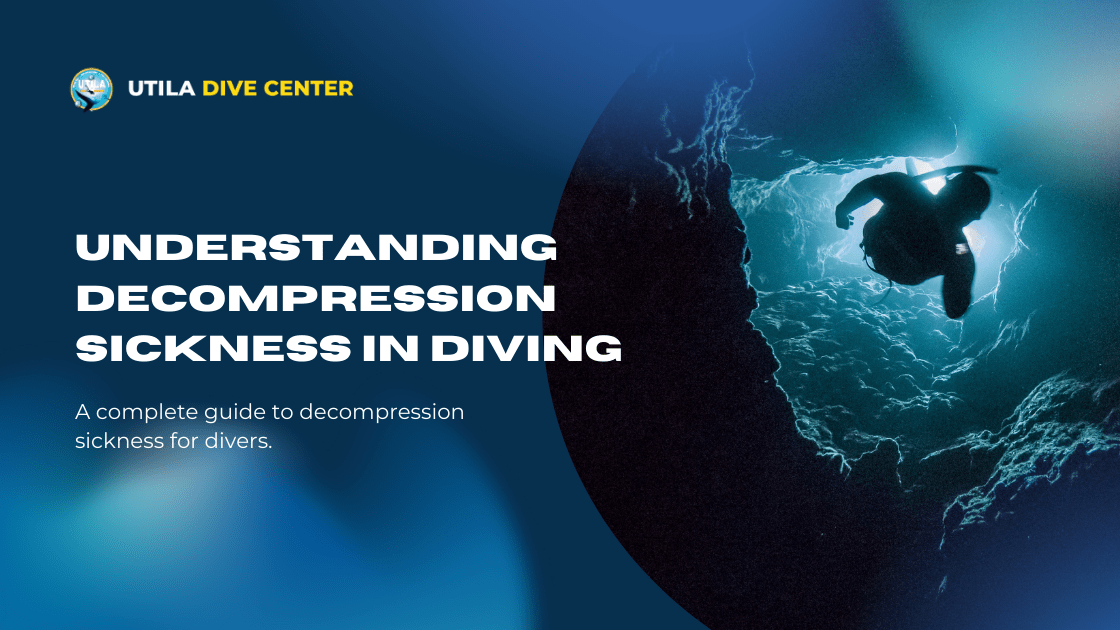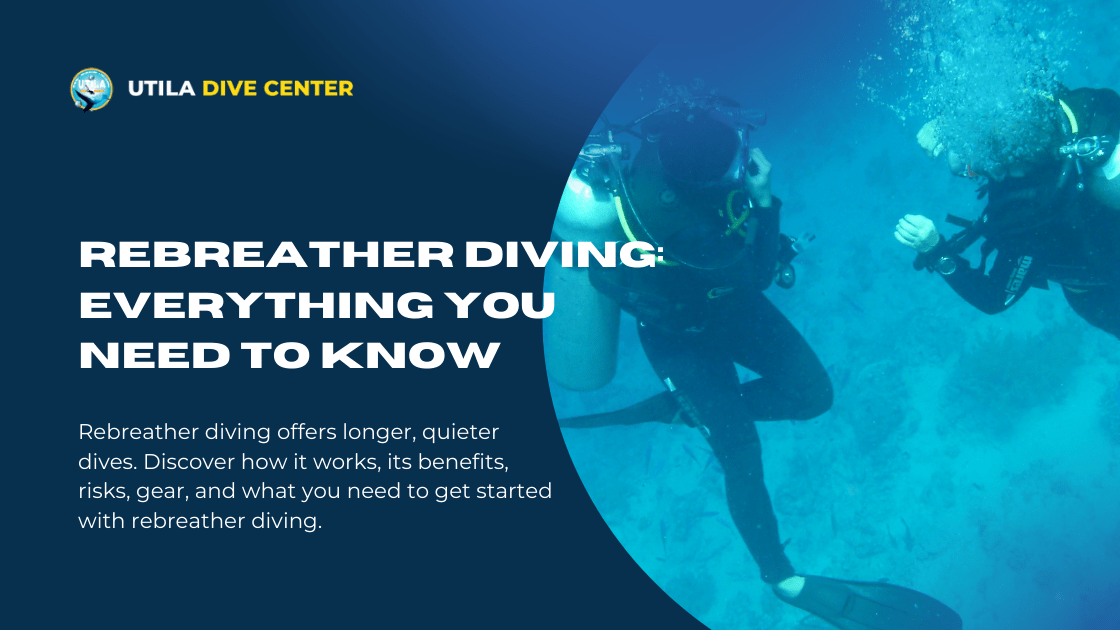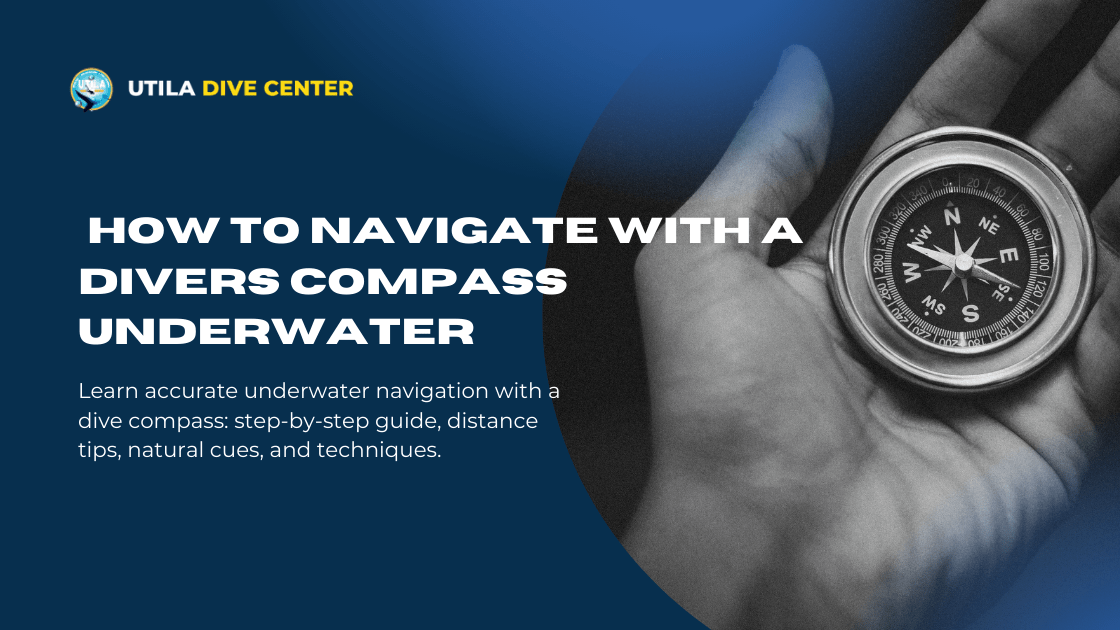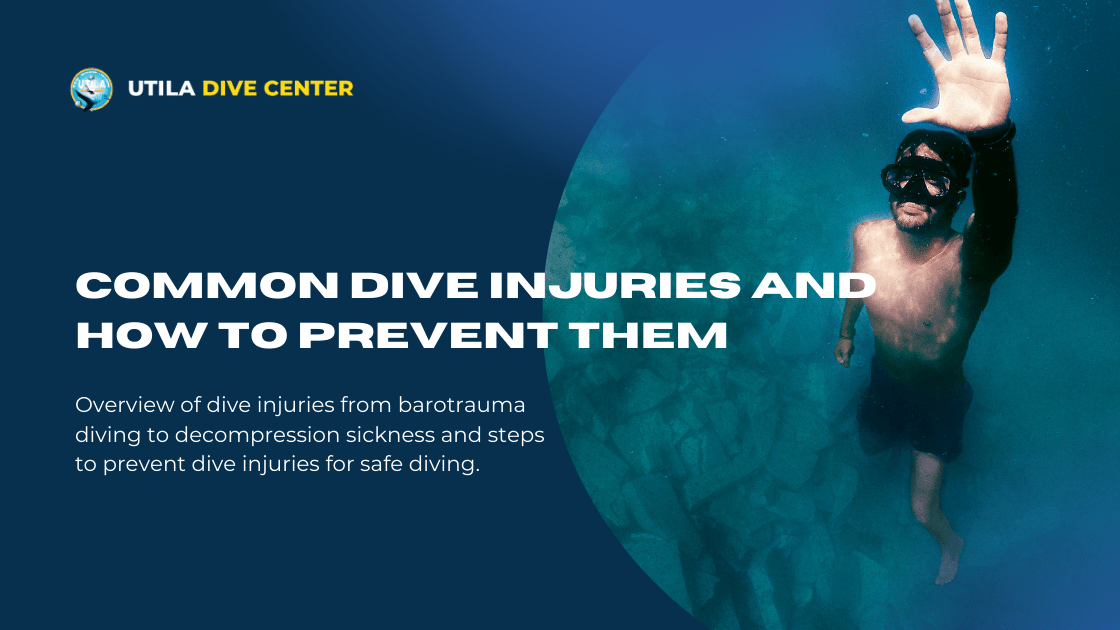
Decompression Sickness in Diving: Explained
Decompression Sickness in Diving: Explained
By: Manny Lagos | Date: 2025-08-26T09:56:21.304Z
If you’ve ever taken a dive into the deep blue sea and felt an odd ache afterward, or heard stories of divers dealing with “the bends”, chances are you’ve already come across the concept of decompression sickness. It’s one of the most talked about conditions in diving, and for good reason. Decompression sickness, or DCS, isn’t just uncomfortable, it can be really dangerous if not understood and treated properly.
At Utila Dive Centre, we’ve trained thousands of divers to not just dive safely but to really understand what’s happening to their bodies beneath the waves. Because let’s face it: when you’re underwater, knowledge is just as important as your air supply.
So, think of this blog as your go-to guide for everything related to decompression sickness: what causes it, how to spot it, how to prevent it, and what to do if it ever happens.
Whether you’re just getting your fins wet or you’re already a diving pro exploring technical dives and deep wrecks – knowing how to handle decompression sickness can make all the difference in your safety and your confidence.
What Is Decompression Sickness?
Decompression sickness (DCS), also known as the “the bends”, is what happens when dissolved gases (mainly nitrogen) form bubbles in your body’s tissues and bloodstream. This typically occurs if a diver comes up too quickly after spending time at depth, especially without allowing for proper decompression after diving.
To put it in simple words: When you’re underwater, your body absorbs extra nitrogen from the air you’re breathing. No problem so far. But when you ascend, the pressure drops and that nitrogen needs to leave your body slowly. If it rushes out too fast, it can form bubbles. And those bubbles? They can get stuck in your joints, muscles, skin, or even your nervous system, causing anything from mild aches and fatigue to serious medical issues.
That’s exactly why learning what causes decompression sickness (and how to avoid it) is a core part of every diver’s training here at Utila Dive Centre.
Difference between DCS and arterial gas embolism (AGE) — decompression illness
Now, you’ll often hear the term decompression illness (DCI) thrown around in dive training or safety briefings. It’s actually a catch-all phrase that covers two different conditions: decompression sickness (DCS) and arterial gas embolism (AGE). They’re related, but not the same. Here’s how:
- DCS happens when nitrogen bubbles form in your tissues or bloodstream because you came up too fast.
- AGE, on the other hand, is usually caused by holding your breath while ascending. That trapped air can expand, damage the lungs, and push bubbles directly into your bloodstream. It tends to hit harder and faster.
The key difference though?
- DCS builds up more gradually.
- AGE strikes suddenly and severely.
But here’s the bottom line: no matter what you call it, any weird feeling after a dive: pain, dizziness, or difficulty breathing should be taken seriously. Don’t try to “wait it out”. Alert your dive buddy or dive instructor and get help right away.
How to Identify Decompression Sickness: Symptoms & Causes
DCS doesn’t always show up the minute you hit the surface. In fact, DCS symptoms can sometimes sneak up hours later.
Here’s how to recognize the signs, broken down by type:
Musculoskeletal
This is the most common symptom of decompression sickness and the reason behind the nickname “the bends”. Divers often feel a deep, dull ache in the joints or muscles, especially in the shoulders, elbows, and knees. It’s the kind of pain that makes you want to curl up, but no amount of stretching helps. That’s your cue to stop, listen to your body, and get it checked.
Skin rash & itching
An itching sensation, often called “skin bends,” is a lesser-known DCS symptom, but still worth paying attention to. You might notice an itchy, tingling feeling or see a blotchy, marbled rash (usually across your torso). Some divers also experience puffiness or swelling under the skin.
Neurological issues
This is when things get more serious. We’re talking about symptoms like:
- Numbness or tingling
- Confusion or memory issues
- Difficulty walking or coordinating movement
- Blurry vision or auditory disturbances
If any of this happens, either to you or your dive buddy stop diving and seek medical help right away. Quick action makes all the difference here.
Cardiopulmonary symptoms
Rare but critical, these include:
- Chest pain
- Difficulty breathing
- Coughing or a sense of drowning
These decompression sickness signs can look a lot like a heart attack or pulmonary embolism and need immediate medical care.
Why decompression sickness signs may appear hours after surfacing?
As we just mentioned, decompression sickness doesn’t always hit right away. You might feel fine after your dive, only to start noticing DCS symptoms a few hours later. So, what’s going on?
After your dive, nitrogen bubbles can continue to form as your body slowly adjusts to surface pressure. In most cases, they’ll get reabsorbed harmlessly. But certain things, like jumping on a flight too soon, hitting the gym, or even dehydration can trigger the DCS symptoms.
It’s one of the biggest reasons we tell divers: take your surface interval seriously, hydrate well, and always wait the recommended time (at least 18-24 hours) before flying. Your body’s still doing the work so give it all the time it needs.
5 Factors That Increase Decompression Sickness Risk
Knowing what raises your DCS risk isn’t just about scaring you, it’s about helping you plan smarter, safer dives.
Here are 5 factors that increase your risk of decompression sickness:
- Rapid ascents: skipping safety stops is a common cause of decompression sickness.
- Deep or long dives: More time and depth = more nitrogen absorbed.
- Cold water: Slows blood flow, making off-gassing harder.
- Dehydration: Thick blood means slower nitrogen release.
- Repetitive dives: Back-to-back dives build up nitrogen.
Add to that individual factors like age, body fat percentage, and physical fitness, and you start to see how complex DCS risk can be. That’s why proper training and pre-dive planning are non-negotiable.
P.S. Don’t forget to check the local dive conditions before jumping in.
How to Prevent Decompression Sickness & Its Treatment
Prevention is always the best plan when it comes to DCS. At Utila Dive Centre, we drill safety protocols into every diver, from beginner to pro.
To prevent DCS:
- Always dive within no-decompression limits or follow required stops on your computer.
- Ascend slowly – no faster than 9 meters (30 feet) per minute.
- Use a dive computer and plan your dives accordingly.
- Stay hydrated and well-rested, and avoid alcohol before diving.
- Wait the recommended time before flying.
- Consider nitrox (enriched air) training to reduce nitrogen exposure on certain dives.
Remember: most cases of DCS are avoidable with proper planning and smart habits.
If DCS does happen, here’s what to do:
- Immediate 100% oxygen administration.
- Hydrate properly.
- Rapid transport to a hyperbaric chamber for recompression therapy. The sooner, the better.
At Utila Dive Centre, we’re fully equipped to handle these scenarios. Our instructors are pros at spotting the early signs of DCS SCUBA diving issues and getting you the help you need – fast.
Conclusion
Decompression sickness might sound intimidating, but with the right training, awareness, and dive practices, it’s definitely avoidable. Knowing the DCS symptoms and taking proper precautions can help you dive confidently, anywhere in the world! How amazing is that?
Moreover, at Utila Dive Centre, we don’t just teach you how to dive, we teach you how to dive smart. Our experienced instructors walk you through every safety practice so that from your very first bubble to your deepest dive, you always know how to protect your body, your mind, and your dive buddy.
So remember: Respect your limits. Ascend slowly. Practice good underwater navigation. And stay safe.
Got more questions about bends diving symptoms or want to know about the health benefits of SCUBA diving?
Book a SCUBA diving in Utila.
References:
[1] – Dan.org - What is decompression illness and how is it treated
[2] – Merckmanuals.com - Overview of decompression sickness and diving-related injuries
[3] – Blog.padi.com - What are “the bends” in SCUBA diving?
[4] – Proscubadiver.net - Understanding decompression illness in SCUBA diving

Rebreather Diving: Everything You Need to Know
Rebreather diving offers longer, quieter dives. Discover how it works, its benefits, risks, gear, and what you need to get started with rebreather diving.
Read more
12 Rules of Scuba Diving All Divers Must Follow
We've curated a list of 12 rules of scuba diving to help you stay safe, protect marine life, and enjoy your underwater adventures with confidence.
Read more
How to Navigate With a Divers Compass Underwater
Learn accurate underwater navigation with a dive compass: step-by-step guide, distance tips, natural cues, and techniques.
Read more
Common Dive Injuries and How to Prevent Them
Overview of dive injuries from barotrauma diving to decompression sickness and steps to prevent dive injuries for safe diving.
Read more